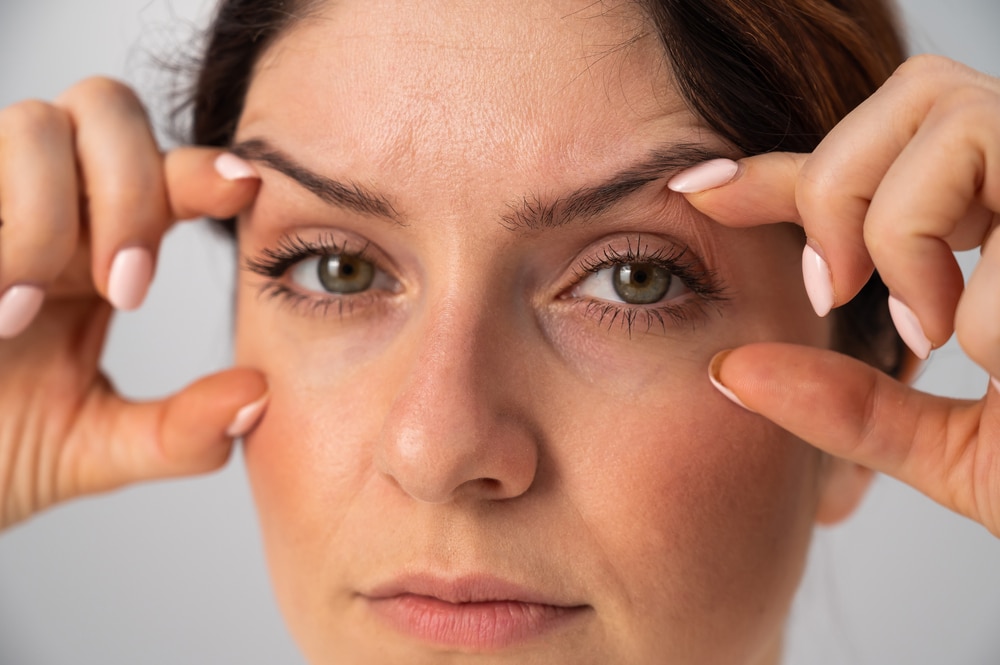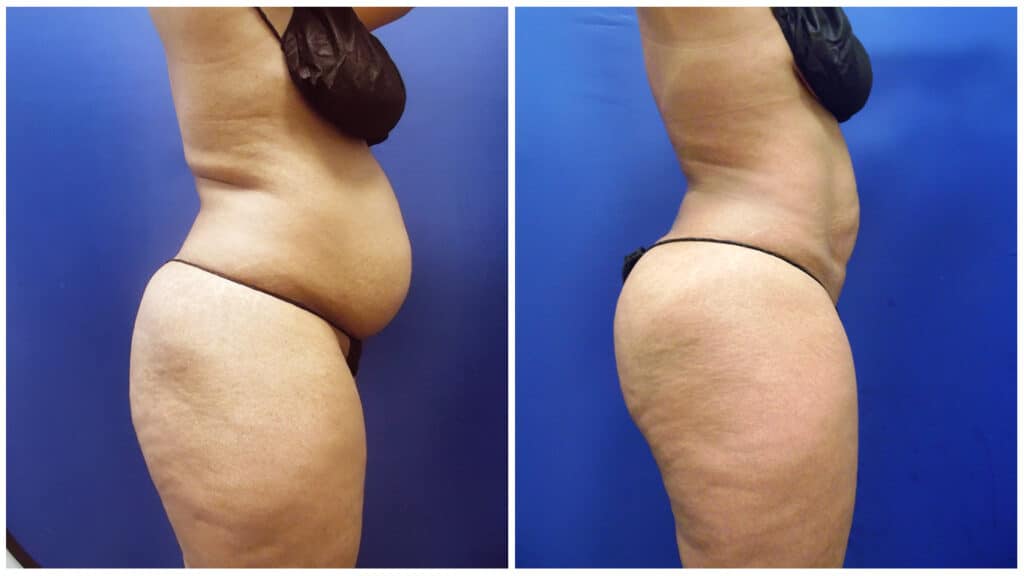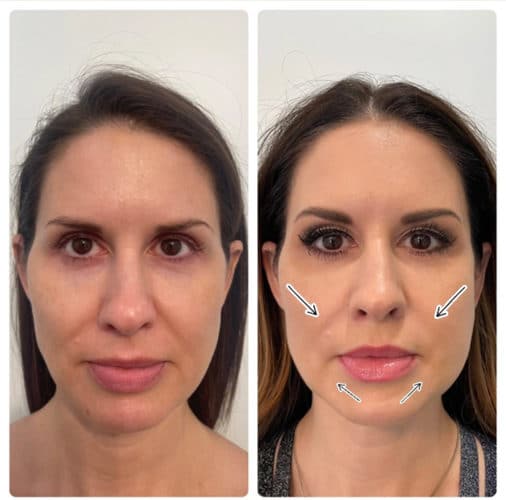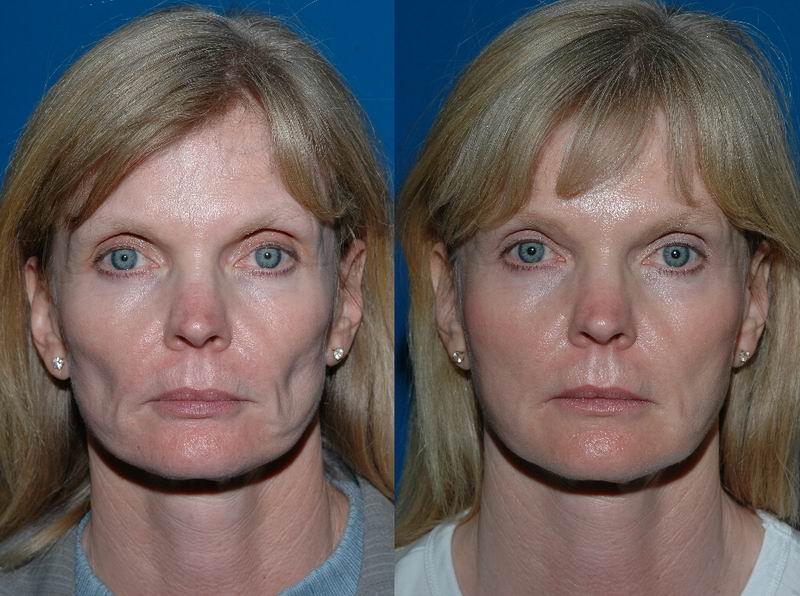Blepharoplasty surgery recovery is a crucial phase that can significantly impact your results, especially if your upper eyelids droop after the eyelid procedure for an eyelid lift. Understanding what to expect during this time, especially the outcome post surgery and the year post surgery, is essential for a smooth healing process after recent reconstructive surgery. Swelling, bruising, and discomfort are common after eyelid surgery recovery time, but knowing how to manage these symptoms with medicines can make all the difference.
You’ll want to follow post-operative care instructions closely during eyelid surgery recovery time to ensure optimal healing. Rest, ice packs, and medications will be your best friends during eyelid surgery recovery. Staying informed about potential complications during eyelid surgery recovery is also key to feeling confident as you recover. This guide will walk you through everything you need to know about blepharoplasty surgery recovery for your eye lids, helping you achieve the refreshed look you desire while minimizing stress along the way.
What to Expect During Recovery
Swelling and Bruising
Patients will experience swelling and bruising around the eyelids after blepharoplasty. This is a normal part of the healing process. Swelling typically peaks within the first 48 hours. Bruising may take longer to fade during eyelid surgery recovery, often lasting up to two weeks. Cold compresses can help reduce swelling. Applying them to the eye lid for 10-15 minutes every hour can provide relief.
Pain levels vary among individuals. Some may feel mild discomfort in the eye, while others experience more significant pain under the lid. Over-the-counter pain relievers usually suffice. Prescription medications may be necessary for some patients. It’s important to follow the surgeon’s guidelines on eye medication use and lid care.
Gradual Improvement
The eyelid surgery recovery process includes gradual improvement in appearance over several months. Initial results may not reflect the final outcome due to eye swelling of the lid. Most patients notice significant changes in the eye and lid by two weeks post-surgery. The eyes and lid appear brighter and more youthful as healing progresses.
Full results become visible to the eye around three to six months after surgery. At this point, swelling around the eye should have significantly reduced, revealing the true effects of the procedure. Patients often feel pleased with their new look once they see the final results with eye-catching features.
Resuming Activities
Most individuals feel ready to resume normal activities within 10 to 14 days after eye surgery. Light activities can start sooner, but strenuous exercise should wait until cleared by a doctor eye. Returning to work depends on personal comfort and job demands in the eye. Many people go back to work in one to two weeks.
Follow-up appointments are crucial during recovery. These check-ins allow surgeons to monitor healing and address any concerns. Patients should report unusual symptoms, such as excessive swelling or pain, immediately.
Tips for a Smooth Recovery
Following specific eyelid surgery recovery tips aids in a smooth recovery. Here are some key points:
- Keep your head elevated while resting.
- Avoid heavy lifting or strenuous workouts.
- Use prescribed ointments as directed.
- Stay hydrated and eat nutritious foods.
- Follow all post-operative care instructions given by your surgeon.
These steps help minimize complications and promote faster healing.
Typical Recovery Timeline
Initial Days
The average blepharoplasty recovery time begins right after surgery. Patients often experience some discomfort and swelling. Ice packs can help reduce swelling during the first few days.
Stitches are typically removed within 5 to 10 days post-surgery. This is an important step in the healing process. It helps ensure that the eyelids start to heal properly without excess tension on the skin.
Weeks One to Three
Swelling and bruising usually persist for about 1 to 3 weeks. During this period, many patients feel like they look tired or puffy. This is normal and should improve gradually.
Most people can return to their normal activities within a week, but it’s wise to avoid strenuous exercise. Light activities, such as walking, are encouraged to promote circulation without overexertion.
Month One to Three
After the initial recovery phase, changes continue. Around the one-month mark, many notice significant improvements in their appearance. However, complete healing takes longer.
The eyelid surgery timeline shows that full recovery of eye appearance can take up to 3 months. Some residual swelling may linger beyond this point. The final results become clearer as the eyelids settle into their new shape.
Long-Term Care
Post-operative care is essential for a smooth recovery. Patients should follow their surgeon’s instructions closely. Avoiding sun exposure is crucial during the early stages of healing. Wearing sunglasses can protect sensitive skin from UV rays.
Regular follow-ups with the surgeon help monitor healing progress. Any concerns or unusual symptoms should be reported immediately.
Physical Changes After Surgery
Eyelid Shape
Expect temporary changes in eyelid shape after the surgery. The eyelids may appear tighter than usual. This change is due to the swelling and the healing process. It can take several weeks for the eyelids to settle into their new shape.
During this time, some patients notice a difference in how their eyes look when they smile or blink. These changes are normal and part of the recovery.
Eye Closure
Patients may experience initial difficulty in closing their eyes completely after undergoing surgery. This issue often occurs because of swelling and tightness around the eyelids. It can feel uncomfortable, especially at night.
e may find it hard to sleep without feeling like their eyes are fully closed. Using lubricating eye drops can help ease this discomfort during recovery.
Swelling and Bruising
Swelling and bruising are common outcomes post-surgery. Expect these symptoms to peak within the first few days after the procedure. Most patients see a gradual reduction in swelling over the next few weeks.
Bruising can also vary from person to person. Some might experience more discoloration than others. Keeping your head elevated can help reduce swelling faster.
After about one week, many patients start to notice significant improvements. By two weeks, most of the noticeable swelling should diminish. However, complete recovery can take longer.
Recovery Instructions
Follow your surgeon’s postoperative instructions closely for optimal recovery. This includes taking prescribed medications as directed. Avoid strenuous activities that could strain your eyelids.
Applying cold compresses can also help manage swelling and discomfort in the first few days. Patients should avoid rubbing their eyes or exposing them to direct sunlight during recovery.
Long-Term Changes
Over time, the results of blepharoplasty become clearer. Many people report feeling more confident about their appearance after surgery. They appreciate having a more youthful look without excess skin or bags under their eyes.
Most changes stabilize within a year post-surgery. By then, patients usually enjoy the full benefits of their cosmetic surgery.
Self-Care Tips for At-Home Recovery
Keep Eyelids Clean
Eyelid hygiene is crucial after blepharoplasty. Keeping the eyelids clean helps prevent infections. Use a gentle cleanser recommended by your doctor. Avoid rubbing or touching the eyelids. This action can disturb the healing process. Instead, lightly pat the area if necessary.
Washing hands before any contact with the eyes is essential. Dirty hands can introduce bacteria. Use a clean, soft cloth to wipe away any discharge from the eyes gently. This step keeps the area free from irritants and promotes recovery.
Follow Doctor’s Instructions
Doctors provide specific guidelines for post-surgery care. Following these instructions is vital for a smooth recovery. They may recommend applying prescribed ointments or medications. These can help reduce swelling and promote healing.
Attend follow-up appointments as scheduled. These visits allow doctors to monitor healing progress. They can address any concerns you might have. If any unusual symptoms arise, contact your doctor immediately.
Avoid Contact Lenses and Makeup
After surgery, it’s important to avoid wearing contact lenses. Doctors usually recommend staying away from them for at least two weeks. Contacts can irritate sensitive eyelids and increase the risk of infection.
Eye makeup should also be avoided during this time. Products like mascara, eyeliner, and eyeshadow can cause irritation and hinder healing. Face creams that come into contact with the eyelids should be set aside as well. The skin around the eyes needs time to recover without additional products.
Manage Swelling and Discomfort
Swelling is common after blepharoplasty surgery. Applying cold compresses can help reduce puffiness. Use a clean cloth soaked in cold water or ice packs wrapped in a towel. Limit application to 15 minutes at a time to avoid frostbite.
Resting helps speed up recovery too. Keep your head elevated while sleeping to minimize swelling. Using extra pillows can assist with this position.
Stay Hydrated and Nourished
Drinking plenty of water supports overall health during recovery. Hydration aids in healing and reduces dryness around the eyes. Eating nutritious foods also plays a role in recovery. Focus on fruits, vegetables, and proteins to support tissue repair.
Avoid alcohol and caffeine during the initial recovery period. These substances can dehydrate the body and slow down healing.
Managing Activity Levels
Avoid Strenuous Activities
Recovery from blepharoplasty surgery requires careful attention to activity levels. Patients should avoid strenuous activities for at least two weeks after the procedure. This includes heavy lifting, intense workouts, and any activity that raises heart rate significantly. Engaging in these activities too soon can lead to complications. Swelling may increase, and healing could be delayed as a result.
Rest is crucial during this period. The body needs time to heal without added stress. Following this guideline helps ensure a smoother recovery process. Light walking is acceptable but should be limited.
Refrain from Swimming
Swimming and exposure to water can be harmful in the early recovery stages. Patients must refrain from swimming, hot tubs, and dusty environments for 1 to 2 weeks post-surgery. Water can introduce bacteria, increasing the risk of infection around the surgical site. Hot tubs can raise body temperature, which might worsen swelling.
Dusty environments can irritate healing eyelids. Keeping the area clean and free from irritants is essential for proper healing. Staying away from these conditions protects the eyes during this vulnerable time.
Gradually Resume Activities
Returning to normal routines should happen gradually. Each patient’s recovery timeline may differ based on individual health factors. It’s important to follow your doctor’s advice when resuming activities. They will provide guidance tailored to your specific situation.
Start with light tasks around the house before moving on to more demanding responsibilities. For instance, cooking or light cleaning can be manageable within a week or two, depending on comfort levels.

Physical jobs or rigorous exercise programs should wait longer. Patients may need up to six weeks before fully returning to these activities, depending on their healing progress.
Key Part of Recovery
Managing activity levels is a key part of recovery after blepharoplasty surgery. This approach minimizes risks while promoting healing. Listening to your body is vital; if you feel discomfort or strain, it is best to take a step back.
Communicate with your healthcare provider about any concerns during recovery. They can offer valuable insight and adjust recommendations as necessary.
Medication and Pain Management
Prescribed Medicines
Follow your doctor’s instructions for pain management. They will prescribe medicines to help reduce discomfort after blepharoplasty surgery. These pain medications are essential for a smooth recovery. Take them as directed. Overusing or misusing these medications can lead to complications.
Pain levels may vary among individuals. Some people experience mild discomfort, while others may feel more significant pain. Always communicate with your healthcare provider if your pain worsens or does not improve. Your doctor may adjust the dosage or change the medication if needed.
Eye Care Treatment
Using eye drops and ointments is crucial during recovery. Doctors often recommend specific eye ointments to prevent infection and promote healing. Follow the instructions carefully when applying these treatments. Usually, you will need to apply the ointment several times a day.
Make sure to wash your hands before touching your eyes. This practice helps avoid introducing bacteria that could cause infections. If you have any questions about how to use the eye drops or ointment, consult your nurse or doctor.
Consult Your Doctor
Before resuming any previous medications, consult your healthcare provider. Some medications may interfere with recovery or increase the risk of complications. Discuss all medications, including over-the-counter drugs and supplements.
Your doctor will guide you on when it is safe to restart these treatments. They will consider your overall health and recovery progress in their recommendations. It is essential to follow their advice closely.
Dealing with Discomfort
e discomfort is normal after surgery. Swelling and bruising around the eyes can occur, making it uncomfortable for some people. Applying cold compresses can help reduce swelling and provide relief.
If you experience severe pain that does not respond to prescribed medicines, contact your doctor immediately. They will assess your situation and determine if further treatment is necessary.
Role of Nurses
Nurses play a vital role in post-operative care. They monitor patients for any signs of complications and provide guidance on medication usage. Do not hesitate to ask them questions about your recovery process.
They can offer tips on managing pain and caring for your eyes properly. Their support is valuable in ensuring you have a successful recovery from blepharoplasty surgery.
Caring for Incisions
Keep Clean
Surgical incisions require careful attention. Keeping the incision areas clean and dry is crucial. This helps prevent infection and promotes healing. Patients should gently wash the area with mild soap and water. Avoid scrubbing the incisions. Pat them dry instead.
Bandage Use
Wearing any recommended bandages is important for recovery. Follow the surgeon’s instructions on how long to wear them. Bandages protect the eyelids from dirt and bacteria. They also help reduce swelling. Change the bandages as directed to maintain cleanliness.
Avoid Pressure
Avoid putting pressure on the incision sites. This means steering clear of heavy lifting or strenuous activities. Pressure can lead to complications like increased swelling or delayed healing. Resting is essential during this time.
Eyelid Care
Eyelid care goes beyond just keeping incisions clean. Applying cold compresses can help reduce swelling. Use a clean cloth soaked in cool water for this purpose. Limit direct sunlight exposure to the eyelids. Sunlight can cause irritation and worsen scars.
Removable Stitches
If your procedure involves removable stitches, follow up with your doctor as scheduled. These stitches usually come out within one to two weeks post-surgery. Avoid touching or pulling at them before they are ready to be removed.
Managing Scars
Incision scars can be a concern after blepharoplasty surgery. To minimize their appearance, avoid applying makeup until fully healed. This includes eyeliner and other cosmetic products around the eyes. Once cleared by your doctor, gentle moisturizing creams may help.
Health Monitoring
Monitor your health closely during recovery. Look for signs of infection such as redness, swelling, or discharge from the incision sites. Report any unusual symptoms to your healthcare provider immediately.
Follow-Up Appointments
Attend all follow-up appointments with your surgeon. These visits allow them to check on healing progress and address any concerns you may have about your eyelids or overall recovery.
When to Seek Medical Help
Severe Pain
Contact your doctor if you experience severe pain. Some discomfort is normal after blepharoplasty surgery. However, sharp or intense pain can indicate a problem.
If the pain does not improve with medication, call your eye care specialist. They can assess your situation and determine if further treatment is necessary.
Signs of Infection
Report any signs of infection immediately. Look for increased redness around the eyelids. Discharge or swelling should also raise concerns.
Infections can delay recovery and lead to complications. If you notice these symptoms, take action quickly. Your doctor may prescribe antibiotics to address the issue.
Follow-Up Appointments
Attend all scheduled follow-up appointments. These visits are crucial for monitoring your recovery. Your doctor will check how well your eyelids are healing. They will also evaluate if stitches need removal.
Missing appointments can hinder your progress. Consistent follow-up ensures that any issues are caught early. It helps prevent further complications.
Eyelid Issues
Monitor your eyelids closely during recovery. If they droop more than expected, contact your doctor. Droopy eyelids can affect vision and appearance.
Changes in eyelid position may require additional intervention. Keep track of any unusual changes or discomfort.
Eye Drops Usage
Use prescribed eye drops as directed by your doctor. These drops help keep your eyes moist and comfortable during recovery. They can also aid in healing.
Follow the instructions carefully to avoid complications. Overusing or misusing drops can lead to more problems.
Stitches Care
Follow the care instructions for your stitches diligently. Keeping the area clean is essential to prevent infection.
Avoid touching the eyelids unless necessary. This reduces the risk of introducing bacteria to the surgical site.
Emotional Support
Consider seeking emotional support during recovery. Surgery can be stressful, and feelings of anxiety are common. Talk to friends or family about your feelings.
Support groups or counseling may also help address concerns about appearance and recovery.
Importance of Sun Protection
Eye Protection
People recovering from blepharoplasty need to prioritize eye protection. The eyelid skin is sensitive after surgery. Exposure to sunlight can hinder healing and cause discomfort. Wearing sunglasses on bright days can shield the eyes. It is advisable to wear them for up to a year post-surgery. This simple action helps protect the delicate eyelid area.
Sunglasses should block 100% of UV rays. Look for labels that indicate full UV protection. This ensures safety during outdoor activities. Avoiding direct sunlight speeds up recovery. It also reduces the risk of complications.
Safety Measures
Safety is crucial during recovery from eyelid rejuvenation procedures. Direct sunlight can lead to irritation and swelling. Keeping the eyes safe aids in maintaining clear vision. Broad-brimmed hats offer an extra layer of protection. They provide shade for the face and eyes, especially during peak sun hours.
Wearing protective eyewear becomes essential when outdoors. Even on cloudy days, UV rays can penetrate through clouds. Thus, it’s important to make sun protection a daily habit.
Vision Care
After surgery, people may experience temporary changes in their vision. These changes occur due to swelling or bruising around the eyelids. Protecting the eyes from sunlight helps minimize these effects. Proper care allows for a smoother recovery process.
Avoiding bright lights and glare is beneficial too. Using anti-reflective lenses can reduce discomfort when looking at screens or reading materials. This adjustment aids in keeping the eyes comfortable during recovery.
Eyelid Skin Care
The skin around the eyelids requires special attention after surgery. It is thinner and more susceptible to damage from UV rays. Applying sunscreen specifically designed for the face can help protect this area. Choose a broad-spectrum sunscreen with SPF 30 or higher.
Reapply sunscreen every two hours when outside, especially if sweating or swimming. This routine helps maintain healthy eyelid skin while promoting healing.
Sleep Considerations
Adequate rest plays a role in recovery as well. People should ensure they get enough sleep during this time. Sleep helps the body heal and rejuvenate itself. Keeping the head elevated while sleeping can reduce swelling too.
Combining proper sleep with sun protection creates an effective recovery plan. Following these guidelines leads to better outcomes after blepharoplasty surgery.
Final Remarks
Recovery from blepharoplasty is crucial for achieving the best results. You should follow the guidelines outlined, ensuring proper self-care and managing your activity levels. Be proactive about pain management and incision care to promote healing. Staying vigilant about any unusual symptoms will help you avoid complications.
Emphasize sun protection to safeguard your results. This journey requires patience, but with the right approach, you’ll appreciate the transformation. Take charge of your recovery process and embrace this new chapter. For more personalized advice or concerns, consult your surgeon. Your satisfaction and well-being are paramount.
Frequently Asked Questions
What is blepharoplasty recovery like?
Recovery from blepharoplasty involves swelling and bruising around the eyes. Most patients feel discomfort but can manage it with prescribed pain relief. Initial healing takes about a week, but full recovery may take several weeks.
How long does the typical recovery process take?
The typical recovery timeline for blepharoplasty is around 1 to 2 weeks for most daily activities. Complete healing can take up to 6 months as the final results settle in.
What physical changes should I expect after surgery?
After surgery, you may notice swelling, bruising, and temporary dryness in your eyes. These changes usually improve within a few days to weeks as your body heals.
What self-care tips should I follow at home?
At-home care includes keeping your head elevated, applying cold compresses, and using prescribed eye drops. Stay hydrated and follow your surgeon’s instructions closely for optimal recovery.
How can I manage my activity levels post-surgery?
Limit physical activities for at least a week. Avoid strenuous exercises and heavy lifting. Gradually resume normal activities as you feel comfortable and under your surgeon’s guidance.
What medications will I need for pain management?
Your doctor will prescribe pain relievers to help manage discomfort. Over-the-counter options may also be recommended. Always follow your doctor’s advice regarding medication use.
When should I seek medical help during recovery?
Contact your surgeon if you experience severe pain, excessive bleeding, or signs of infection, such as fever or increased redness around the incisions. Prompt attention can prevent complications.











